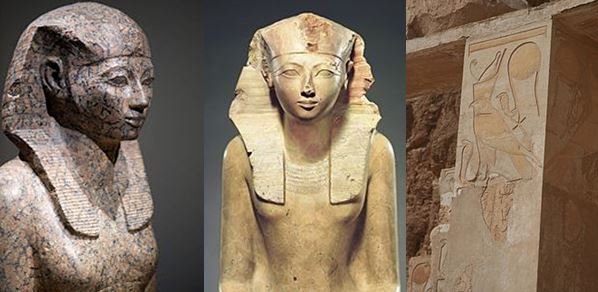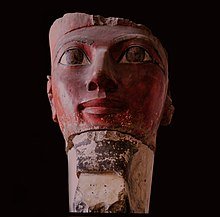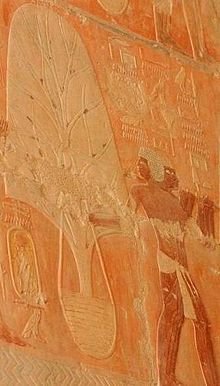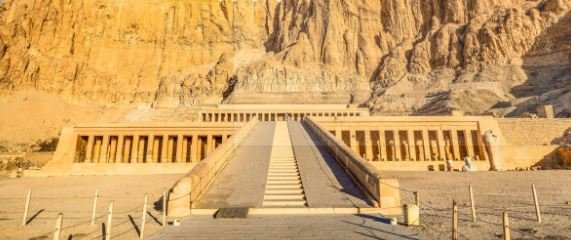Hatshepsut: 10 Greatest Accomplishments

Hatshepsut accomplishments
Highly regarded as one of the most renowned women of ancient history, Hatshepsut was the famed queen regent who defied all odds and went on to become the second known woman to be crowned pharaoh of ancient Egypt.
Although the ancient Egyptians did grant some amount of rights to women, it was still very unusual for a woman to reach the pinnacle of power in a land that was considered one of the greatest civilizations in human history. But Hatshepsut had the family background and, more importantly, the determination to leave her mark in history. And by golly did she make a real splash, so much so that we know for a fact that her envious successors tried to remove her name from the annals of history.
Quick Facts
- Father: Thutmose I
- Mother: Ahmose
- Husband: Thutmose II
- Most known for: longest reigning and most successful female pharaoh of Egypt; establishing trade relations; massive construction projects
- Royal names: Maatkare (Truth is the Ka (Soul) of Re (sun god)), Khnumt-Amun Hatshepsut (Joined with Amun), Wesretkau (Mighty of Kas), Wadjrenput (Flourishing of years),
- Reign – 20 years; from c. 1479 BCE – c. 1458 BCE
- 5th pharaoh of the 18th Dynasty of Egypt
- Predecessor: Thutmose II
- Successor: Thutmose III
- Major achievements: Regarded as one of the greatest ancient Egyptian pharaohs; her reign was one of peace and economic growth, coinciding with Egypt’s golden age
Major Accomplishments of Pharaoh Hatshepsut

In the entirety of ancient Egypt’s history (i.e. from 3000 BCE to 332 BCE), the number of women that ruled as pharaohs was said to be less than five | Image: Statue of Hatshepsut on display at the Metropolitan Museum of Art
What feats did this female pharaoh achieve? Below is a quick presentation of the life, reign and major accomplishments of Hatshepsut, the longest reigning female pharaoh of ancient Egypt.
Chief wife of Thutmose II
Born to parents, Thutmose I and Queen Ahmose, Hatshepsut, then in her early teens, is believed to have married her half-brother Thutmose II. As part of efforts to reemphasize Thutmose II’s succession to the throne following the death of Thutmose I, royal officials thought it best for Hatshepsut to tie the knot with her half-brother. She served as the chief wife of Thutmose II, bringing forth just one child, a daughter called Neferure.
Female pharaoh of ancient Egypt
After a brief period on the throne, Hatshepsut’s husband Thutmose II passed away, leaving the throne for his toddler son Thutmose III. Hatshepsut then became regent, ruling on behalf of her stepson, Thutmose III, until he grew up. However, seven years into her regnal reign, she is said to have crowned herself pharaoh of Egypt. Her reasons for doing so remain largely unknown.
READ MORE: Relationship between Hatshepsut and Thutmose III
However, there are some who say that she violently usurped the throne with the help of loyal courtiers and top military officials. Another possible explanation for this is that Hatshepsut crowned herself pharaoh in order to manage the political crisis that was brewing in Egypt following the death of Thutmose II.

Hatshepsut was one of the few women to rule ancient Egypt, with some claiming that she unceremoniously usurped the throne. Her images and sculptors went through unimaginable indignity in the years following her death | Image: The image of Hatshepsut has been deliberately chipped away and removed – Ancient Egyptian wing of the Royal Ontario Museum
Oversaw the construction of a number of magnificent buildings and artworks
The fact that ancient Egyptians revered the pharaohs as gods meant that it was not uncommon for pharaohs to embark on ambitious building projects. In the case of Hatshepsut, the female pharaoh is often hailed as one of the great builders of her era.
She sanctioned the construction of two 100-foot-tall obelisks at the Great Temple Complex at Karnak. Those obelisks, both having a combined weight of about 900 tons, held the record of being the tallest in the world. It has been said that many of her massive building projects were purposely sited around Thebes, ancient Egypt’s religious hub. This was part of her efforts to equate herself as close as possible to the various Egyptian deities. This was one of the reasons why she built several shrines in honor of Egyptian deities like Hathor, Anubis, Re, and Amun.

Such was the attention given to constructing those buildings that many of them have stood the test of time and are still visible to us modern humans. She was a prolific builder, sanctioning more than hundred construction projects in her two-decade reign, including the tallest obelisks in the world at the time. | Image: A Fallen obelisk of Hatshepsut at Karnak
Hatshepsut successfully stamped her right to rule as pharaoh

Hatshepsut, fully aware of the glass ceiling that existed, had to act fast once she was crowned pharaoh. Her quick thinking augured well for her, as she went on to become one of the first great woman rulers in world history | Image: Head of a statue of Hatshepsut
Hatshepsut deployed smart and cunning ways to reassure the people that she ruled over that she was the legitimate ruler of Egypt. For this, she had to reinvent the image she put out there. Ancient Egyptians believed that it was absolutely vital that the right person be crowned pharaoh, as that person was the one who acted as the human embodiment of the gods. The pharaoh was not just an authoritative ruler, he was also the one who kept the forces of evil and chaos from gaining a foothold in the land.
Hatshepsut’s remarkable trade expedition to the Land of Punt

The expedition to Punt was a huge accomplishment for the female pharaoh as it not only establish solid trade relations with foreign nations, but it also boosted her image both domestically and abroad | Image: A relief from Hatshepsut mortuary temple showing the trees that procured from the Land of Punt. Trade with other countries was re-established; here trees transported by ship from Punt are shown being moved ashore for planting in Egypt—relief from Hatshepsut mortuary temple
One of her remarkable achievements came when she sanctioned a trade and diplomatic expedition to the Land of Punt – an ancient African empire located around the Horn of Africa. Punt was famous for its trading networks linking places in modern-day Saudi Arabia, Ethiopia, Eritrea and Yemen. As a result of Punt’s proximity to the Red Sea, it became famed for facilitating the trade of wild animals, ivory, blackwood, ebony and among other goods.
Eager to acquire some of those prized commodities from Punt, Pharaoh Hatshepsut is said to have devoted a considerable amount of time and resources in setting up the massive trade expedition to the Land of Punt. The Egyptian emissaries and traders went along with their finest linens, grains and papyrus as they hoped to trade those items for Punt’s ebony, wild animals, and all sorts of incense.
Associated herself with Egyptian deities

Hatshepsut associated herself with Maat, the goddess of order and law, in order to reassure her subjects that she was truly of divine status, a ruler who could consolidate the gains and peace of made in the era. | Image: A stela of Queen Hatshepsut (center left) showing her offering drink to the Egyptian sun deity Amun. Her successor Thutmose III can be seen behind her in the hedjet white crown – Vatican Museum. Date: 1473–1458 BC. 18th Dynasty. Medium: Limestone.
The ancient Egyptians compared to other civilizations were known to grant some bits of rights to women in the society. However, it was far from a bed of roses for women as the glass ceiling was visibly there to stop women from attaining certain positions in the society. A woman becoming a pharaoh was an inconceivable notion, one that bothered on sacrilege at some points. Besides, it was believed that a woman becoming a pharaoh went against the principles of Ma’at, the Egyptian goddess of law, order and truth.
The above explains why Hatshepsut put in a lot of effort to make her reign as legitimate as possible. One of the first things that she did was to commission statues, paintings and sculptors that depicted her with the pharaonic false beard and huge upper body posture. She knew that she had to do way more in terms of putting up magnificent infrastructure and the development of the society in order to convince a relatively conservative upper class society that her being a woman pharaoh was not an insult to the gods.
It is for the above reason that she often associated herself with Amun, the Egyptian sun god. She also took the title Maatkare, a name which means “Truth is the Soul of the Sun God”. By taking that name, she was honoring both Ma’at and Amun, as well as reassuring everyone in her kingdom that she was truly the human embodiment of the Egyptian gods.
Properly communicated her achievements to future generations
Hatshepsut put in time and effort to document the achievements she chalked during her reign. Fully aware that her being a female pharaoh could lead to history looking unkindly at, she proceeded to make reliefs on her temple that enumerated her accomplishments, including the famed expedition to the Land of Punt.
To reemphasize her royal blood and succession, she had her father reburied in her tomb at the Valley of the Kings. She also claimed during her reign that her father’s body was possessed by the god Amun just before her conception. This was her way of explaining her claim that she was the daughter of Amun.
Longest reigning ancient Egyptian female pharaoh
Although she was the most successful female pharaoh, she was not the first woman to rule all of Egypt. About 300 years before Hatshepsut’s reign, a female ruler called Queen Sobekneferu ruled as the last Egyptian pharaoh of the 12th Dynasty.
The remarkable thing about Hatshepsut’s reign is that she ruled Egypt for more than 20 years, making her the longest-reigning female Egyptian pharaoh. Majority of those years was spent consolidating the economic and military gains of the Egypt. She thus reigned over a relatively peaceful and very prosperous Egypt.
Another very interesting point worth mentioning is that Hatshepsut was not the first female regent to rule Egypt on behalf of a pharaoh that had not yet come of age.
Hatshepsut’s grand mortuary temple

Mortuary Temple of Hatshepsut – Deir el-Bahari, a complex of mortuary temples located on the west bank of the Nile River – just opposite the city of Luxor
The highlight of Hatshepsut’s building projects was her mortuary temple at Deir el-Bahri, a structure designed to reassure her people that she was a god, just like any other male pharaoh before her.
Hatshepsut’s enormous temple is renowned for being one of the most breath-taking structures of the ancient world. It is located just across the Nile from the Egyptian city of Thebes.
Its length of about two and a half football fields and the limestone cliffs in the area make the temple a living testament to Hatshepsut’s accomplishments. The temple also contains more than 100 statues of her, some of them showing her as sphinx guarding the entrances.
Hatshepsut’s chief minister, Senenmut, is credited with serving as the project manager and architect of the temple.
She was arguably the first known tree specialist of ancient history
The ancient Egyptians had a very deep admiration for trees, often associating them with nourishment, rejuvenation and rebirth. This explains why some ancient Egyptian goddesses like Hathor and Isis were associated with trees. In the case of Queen Hatshepsut, Egypt’s most successful female pharaoh is said to have paid very close attention to trees. She was praised for her in-depth knowledge of how to care for and maintain trees.
Hatshepsut is said to have tasked the explorers on the expedition to the Land of Punt to acquire exotic trees, including myrrh and frankincense. She instructed them on how to care for those trees, which totaled about 30, while they were being shipped to Egypt. When those trees made their way to Egypt, the female pharaoh planted them in the courts of the Deir el-Bahri Temple.
Read More:
- 10 Most Famous Ancient Egyptian Goddesses
- Major Ancient Egyptian Festivals
- Ancient Egyptian Goddess Mut – Origins, History, Myths, & Symbols

More Hatshepsut Facts
- Due to her painstaking effort to depict herself as a male pharaoh in paintings and sculptures, many of her successors did not take too kindly to what they most likely have termed as sacrilegious and contemptible deception.
- Hatshepsut’s chief minister Senenmut’s meteoric rise to the top raised a lot of questions as some rumors floated around that the two were lovers. It was even alleged that Senenmut helped to a great extent in Hatshepsut ascent to the throne of Egypt. During her reign, she bestowed about 90 titles upon Senenmut, including the Great Steward of Amun (the god of Thebes).
- Queen Hatshepsut was born in an era that coincided with Egypt’s Golden Age, i.e. the New Kingdom Era.





























Thank you so much for making my resources for my essay easier!!!
same here